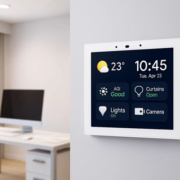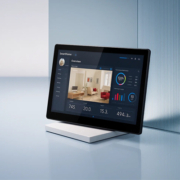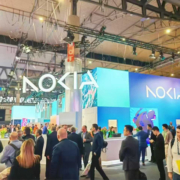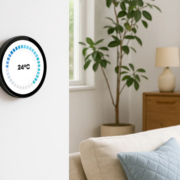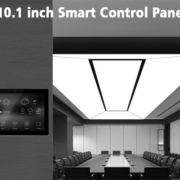Power Supply Options for Smart Home Control Panels: AC, DC, and PoE Compared
In any smart home system, the control panel is the central interface between users and their intelligent environment. Whether it’s managing lighting, curtains, HVAC, or activating preset scenes, touch panels play a crucial role. However, one often-overlooked but critical factor is the power supply method.
Today, smart home control panels typically rely on three main power solutions: AC (Alternating Current), DC (Direct Current), and PoE (Power over Ethernet). In this article, we’ll compare their advantages and disadvantages, and explore how Portworld smart home control panels provide flexible options for different residential, hospitality, and commercial applications.
1. AC Power Supply (Alternating Current)
Features
- Direct connection to 220V AC (or 110V AC in some regions).
- Common in traditional smart switches, sockets, and certain panels.
- Usually requires an adapter to convert AC into the low-voltage DC that panels actually use.
Pros
- Convenient access to existing electrical infrastructure.
- High compatibility with traditional wiring systems.
Cons
- Safety risks: high-voltage wiring requires professional installation.
- Complex cabling, harder to centralize.
- Device stability may be affected by power fluctuations.
Best Use Cases
- Retrofitting traditional homes.
- Scenarios without low-voltage or network cabling.
2. DC Power Supply (Direct Current)
Features
- Panels are powered via 12V/24V DC adapters or centralized low-voltage modules.
- Widely used in modern smart home and building automation projects.
Pros
- High safety: low-voltage DC is safer for both people and equipment.
- Stable and reliable: ideal for 24/7 operation.
- Works seamlessly with RS485, Modbus, KNX bus protocols.
Cons
- Requires additional DC adapters or centralized power modules.
- Dedicated weak-current cabling may be needed.
Best Use Cases
- New residential projects, villas, hotels, and office buildings.
- Multi-panel installations with centralized management.
3. PoE Power Supply (Power over Ethernet)
Features
- PoE delivers both power and data over a single Ethernet cable.
- Common standards: IEEE 802.3af (15.4W), 802.3at (30W), and 802.3bt (up to 60W+).
Pros
- Simplified cabling: one cable for both power and communication.
- Easy installation: no need for separate electrical wiring.
- Centralized management: power can be controlled remotely via PoE switches.
- Highly reliable: ideal for large-scale deployments.
Cons
- Requires PoE-capable switches or injectors.
- Slightly higher upfront infrastructure cost.
Best Use Cases
- Smart hotels, serviced apartments, and offices.
- Large-scale smart homes or intelligent buildings.
- Environments where reliability and centralized management are critical.
4. Portworld Smart Panel Power Supply Solutions
Portworld offers a wide range of Android/Linux smart touch panels and embedded boards that support both DC and PoE power options, giving system integrators and end users maximum flexibility.
YC-SM08P (8″), YC-SM10P (10″), YC-SM55P (5.5″)
- Dual power options: PoE (IEEE 802.3af/at) and 12V DC.
- Powered by RK3566/3568 processors, running Android 11.
- Ideal for homes, hotels, and offices as central control panels.
P6802 (RK3568) and YC-P6602 (RK3566) Embedded Boards
- Support DC power supply, with interfaces for RS485, Modbus, GPIO, PoE.
- Can function as sub-controllers or protocol gateways, seamlessly integrating with Loxone, KNX, Modbus, and other automation systems.
5. Comparison Summary
| Power Type | Safety | Installation Complexity | Stability | Cost | Best Applications |
|---|---|---|---|---|---|
| AC | Low | High – requires electricians | Medium | Low | Retrofit, single-panel installations |
| DC | High | Medium – weak-current cabling | High | Medium | New builds, centralized power projects |
| PoE | High | Low – single cable for power & data | High | Medium-High | Hotels, offices, large-scale smart homes |
When it comes to powering smart home control panels:
- AC is suitable for retrofits but brings wiring complexity and safety concerns.
- DC is the most common choice today, offering safety and stability in modern smart home and building projects.
- PoE represents the future of smart control panels, especially in large-scale residential, hospitality, and commercial environments.
With dual support for DC and PoE, Portworld smart home control panels and embedded boards provide flexible, reliable solutions tailored for system integrators, smart home installers, and project developers. Whether it’s for residential villas, hotels, or intelligent office spaces, Portworld ensures stable power, smooth integration, and scalable smart control.




